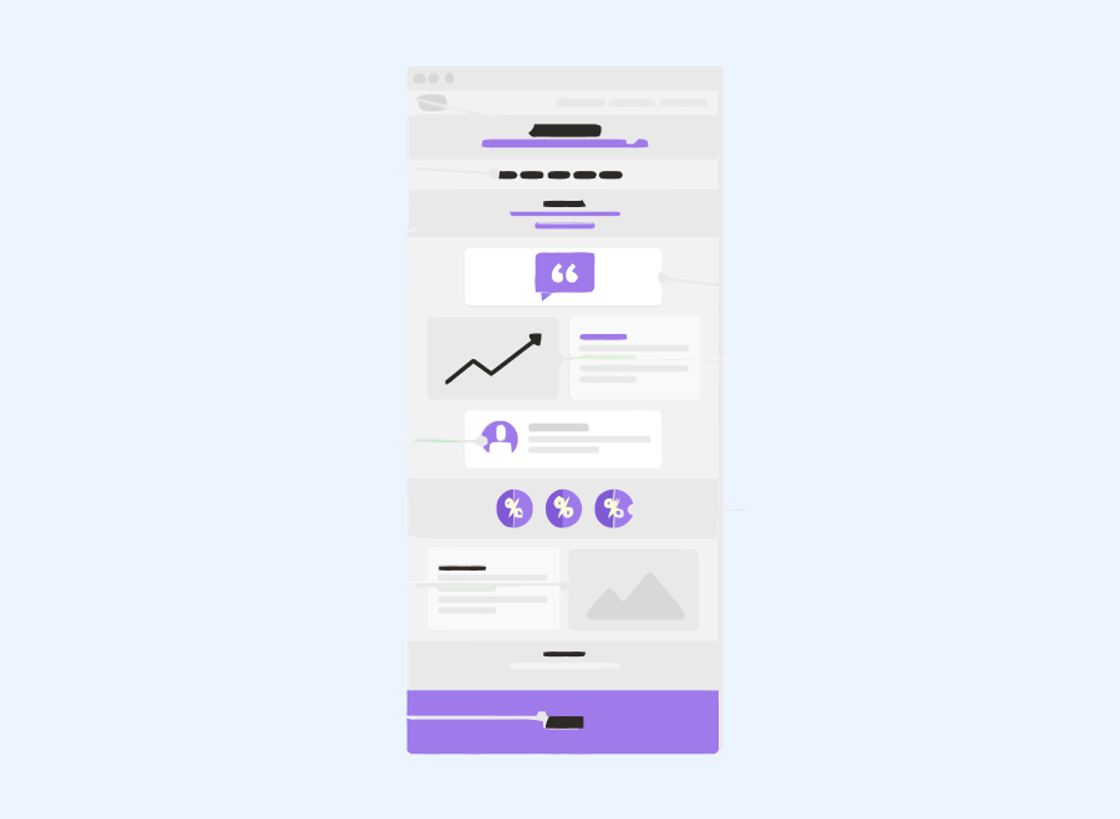Microsite or landing page: advantages and disadvantages

Digital marketing helps businesses expand their online presence, but a traditional corporate website is no longer enough. Businesses need microsites and landing page to promote specific products and services, attract a specific audience. A social media presence is needed to engage with customers and increase traffic.
At first glance, microsites and landing pages seem synonymous, but these digital marketing tools are by no means identical.
They are both usually created in the short term to implement a specific goal or campaign. Which is better? This issue has been discussed by experts for a long time, and opinions still differ.
There are quite a few people who consider them interchangeable. Is it really that simple? No, they are not fully aware of the actual functionality and differences between the two tools. As an entrepreneur, you need to clearly understand these subtleties and make the right decisions.
Looking ahead, let's say: there is no "best" option. Just in some cases, landing page is enough, and in others a microsite may be required.
In a highly competitive and dynamic business landscape, both options have to be used from time to time, according to circumstances.
Advantages and disadvantages of a microsite
B>y definition, this is a miniature target project that is needed for information, training and entertainment, and sometimes for conversion.
On the other hand, it contains everything related to your brand, values, products – it is a comprehensive channel of information and sales.
A microsite is a separate domain, unlike a landing page. Usually dedicated to a narrow topic, it contains several pages compared to dozens and hundreds of pages on the company's main website. These few pages are filled with specific content for a particular audience.
It tells customers the story of specific products and services, creates an interactive and entertaining user experience, increases brand awareness, helps attract fans, and build brand loyalty when used as part of a larger campaign.
Such projects are especially useful when the proposed product or service is difficult to perceive, and the details cannot be explained in several blocks.

Advantages of the microsite
- Ideal for informing and increasing brand loyalty
- Useful, entertaining and informative – it's nice to read
- Encourages users to explore the site and view more pages, increasing the time of interaction with your brand
- Significantly increase traffic and reduce bounce rate
- A separate URL means the most effective use in offline advertising (TV, print, radio)
- Campaign-compatible URL makes it easier to remember and distribute
Disadvantages of the microsite
- Duration and high cost of development and configuration
- Significant time to create and deploy compared to classic one-page landing pages
- The need to find and buy additional domain names
- Great efforts to fill and maintain
- It's harder to create effective calls to action
- It is impossible to accurately estimate the return on investment
- There's a chance that a campaign-targeted URL will scare away loyal customers of the parent website.
Advantages and disadvantages of landing page
A landing page is designed to promote a specific product or service, and is hosted on your main domain, with the URL clearly reflecting the campaign you are implementing.
If the main site can be called a comprehensive tool for information and sales, then a landing page is a tool designed to push your potential clientele further along the sales funnel to perform the desired action. Its specific purpose is conversion (purchase, subscription, registration).
Here, the rules of persuasion of the client come to the fore; entertainment and information aspects play second fiddle. Landing pages look sharper and more aggressive compared to a microsite – they should not contain distracting messages and pursue a single goal.
They are hyperfocused, optimized for keywords, briefly and convincingly convey facts and figures that prove to the user: "It is profitable and safe with us, perform this action and get a lot of advantages."
No attractive effects such as parallax scrolling, animation or video. But landing pages increase the SEO of the main (corporate) site, making the site more searchable for relevant keywords. A competently optimized landing page will raise you in the search results.
If the homepage is focused on navigation and information, the landing page focuses on conversion.

Advantages of landing page
- Rapidly deployable
- Lightweight and relatively inexpensive
- Perfectly cope with conversions
- No need to buy additional domain names
- Do not require significant maintenance
- Allow you to track and analyze user activity, transmitting valuable information to the marketing department
- Increase the search visibility of the site
Disadvantages of landing pages
- Uninformative, which may not satisfy users
- Not too attractive and interesting, unlike microsites
- Cannot serve as an alternative to the main site
- Very demanding on drafting a draft
It would seem that the landing page converts – period. But it's not that simple.
Even communicating with users can eventually lead to conversions; so don't ignore microsites – they act differently, but they can also ramp up conversions, albeit more slowly.
Microsite or landing: what to choose for business?
Now we know two things for sure:
-
If your goal is to build a brand, attract potential buyers and provide them with a delightful user experience (UX), as well as increase loyalty, the best option would be a microsite.
-
If your goal is to drive more traffic to your main site by raising awareness of one particular product or service, increasing conversions with a direct call to action, there is nothing more suitable than a landing page.
Therefore, the answer to the question largely depends on the specific needs of your business at the moment. But there are other factors:
- Budget.
- Staff of the team.
- The scope of your campaign.
- Campaign time limits.
- Your target audience: If they prefer to be responsible and make their own decisions, it is better to communicate through a microsite. If you have to drive them step by step, expand the landing page.
- Target action: if it's a small thing like downloading a free book, the landing page is perfect. If it's something more (for example, a trial version of CRM), an informative microsite is more useful.
Both are powerful digital marketing tools, and many companies have to use both options in different situations. By understanding the advantages and disadvantages of each, you will be able to make the right decisions for your brand.
Previous Article
How should the product card look like in the online store